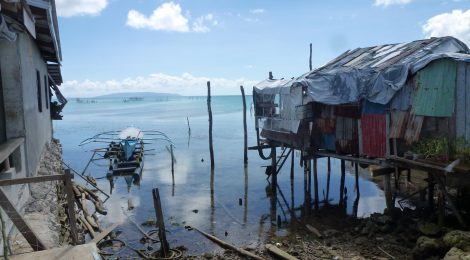
Urban planning after humanitarian crises: Supporting local actors to take the lead
How can humanitarian actors support local government to lead recovery and reconstruction planning after urban crises? My current research project (with Elizabeth Parker, David Garcia and Rahayu Joseph-Paulus) investigates case studies in Indonesia and the Philippines to find out.
Targeting humanitarian assistance in urban areas is particularly challenging given the size, diversity and mobility of urban populations. Humanitarian agencies are typically required to target individuals or families but in cities the ‘vulnerabilities of the needy might be associated with infrastructures/services that are shared across a wide area’ (Crawford & Killing 2012). Consequently there are calls for a ‘paradigm shift’ in humanitarian practice, moving away from an individual household or beneficiary identification and selection process to one that intervenes at a larger scale – for example targeting areas, systems, markets or institutions.
Targeting areas, systems or markets
Area-based targeting approaches (adopting multi-sectoral, participatory approaches to supporting specific geographic areas) may be appropriate if specific locations within the city have a high concentration of needs.
Our review of the literature found that area-based approaches can: prevent the creation or reinforcement of tensions and inequalities within an area; act as a valuable catalyst for local change; present mechanisms for effectively focusing resources; prevent consultation fatigue for disaster-stricken populations; mobilise a ‘bottom-up’ approach; attract much needed investment; and prevent the over-stretching of mainstream programmes and services.
However, if poorly designed and implemented they can: enhance inequalities between the target area and surrounding ones; create an unnecessary distraction from the underlying problem; shift responsibility onto the wrong stakeholder and prevent action; be costly to implement and be an ineffective use of resources; take a long time; lead to a disconnect between local plans and wider city or regional plans which has long-term implications; and be difficult to monitor and evaluate, and thus demonstrate results.
Alternative targeting strategies include systems-based approaches supporting the rehabilitation of critical infrastructure – such as water, sanitation, electricity, roads, transport, communications, healthcare and education. Or market-based approaches supporting the recovery of ‘foundation markets’ through the reestablishment or improvement of supply, distribution and market mechanisms while providing assistance through cash or voucher programmes.
Deciding which targeting approach is most appropriate ‘usually depends on the proportion of the population that needs assistance, the type of programme contemplated, trade-offs between targeting cost and targeting accuracy, and the feasibility of targeting options’ (USAID 2008). While ‘several targeting approaches can be applied simultaneously depending on the programmes envisaged’ (Groupe URD 2011).
Targeting institutions
One of the key findings from the area-based approaches literature review was the need to link area-based approaches to wider city or regional plans and policies. Urban planning is one of the key responsibilities of local government; particularly after humanitarian crises when there are both urgent needs and opportunities to reduce the risk of future disasters. However, local government typically ‘has the least resources, weakest governance and lowest capacity of all of the levels of government’ (King et al. 2013). There is also little guidance for urban planners responding to urban crises or for humanitarian agencies trying to provide them with support.
The Global Alliance for Urban Crises recommends that humanitarian agencies ‘work in support of and in collaboration with municipal authorities’ and ‘concentrate on restoring or bolstering existing city systems’ rather than creating parallel services of provision. Yet Dodman et al found that humanitarian agencies often do not engage with national and local governments due to lack of trust, fears of corruption and where governments are party to conflict. Perhaps this is why another targeting strategy – supporting the recovery of local government – is rarely undertaken or discussed?
Our research
Our current research project, funded through IIED’s Urban Crises Learning Fund, aims to document and compare two case studies where UN-Habitat supported communities and local governments to undertake recovery and reconstruction planning after major urban crises. It focuses on urban planning in Banda Aceh after the Indian Ocean earthquake and tsunami in Indonesia in 2004 and in Tacloban, Ormoc and Guiuan after super typhoon Haiyan in the Philippines in 2013. Analysis of these two cases allows reflection on what has occurred in the first three years after super typhoon Haiyan through comparison with the longer-term effects of recovery and reconstruction planning in Banda Aceh.
Two working papers based on the fieldwork in Indonesia and the Philippines will be published shortly. The comparison paper will be available later this year.








